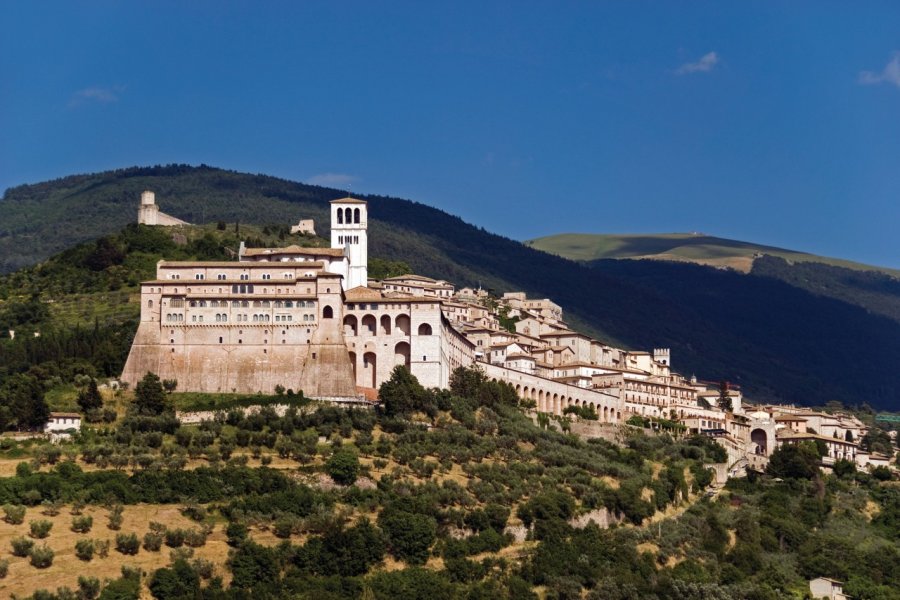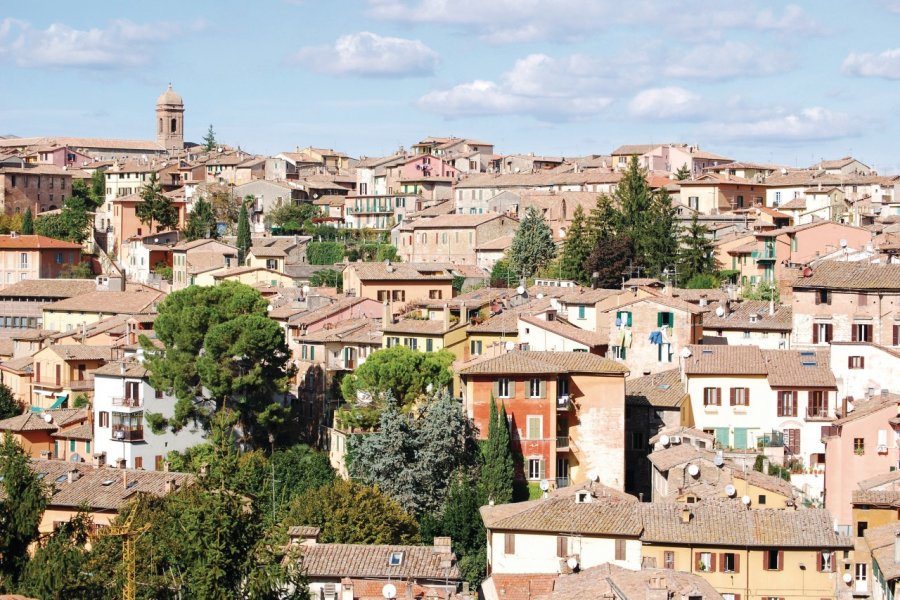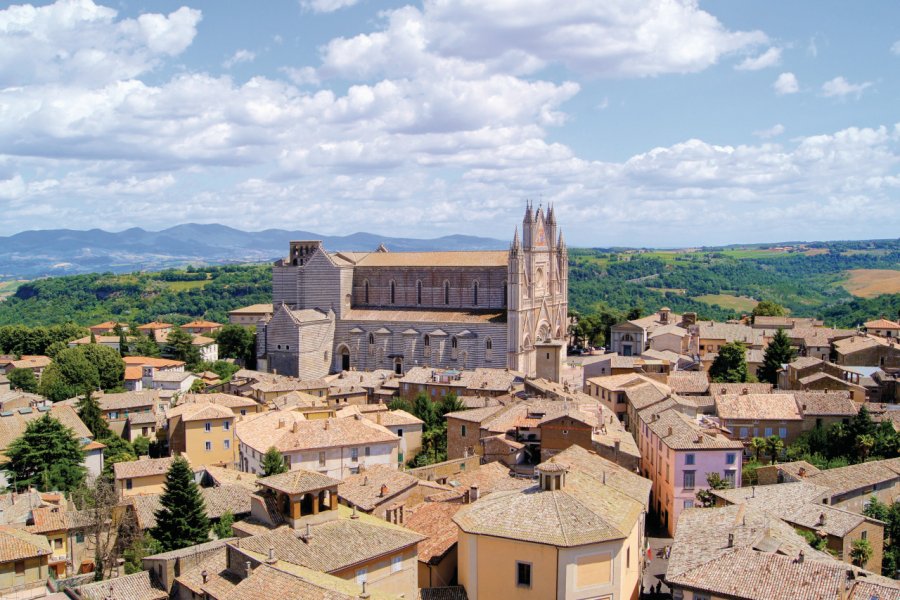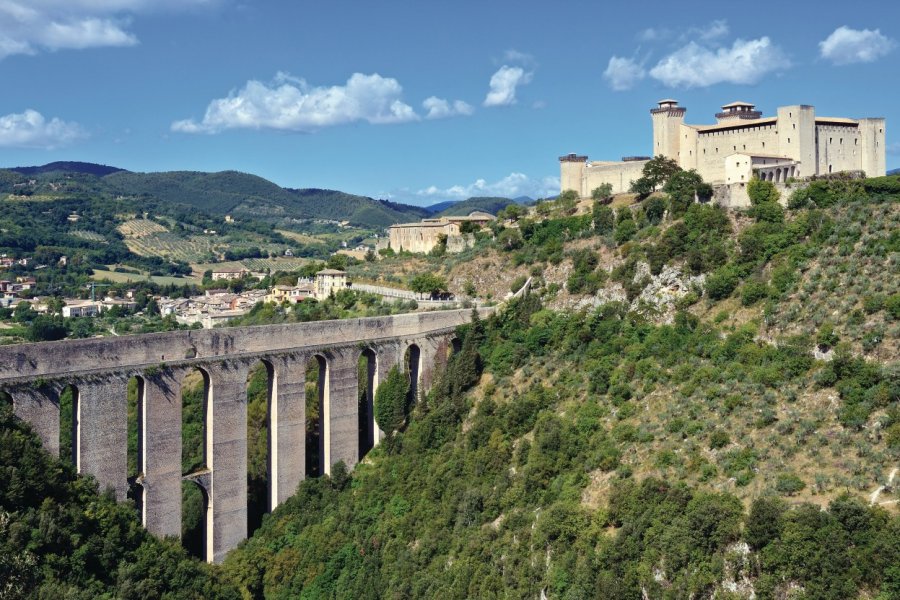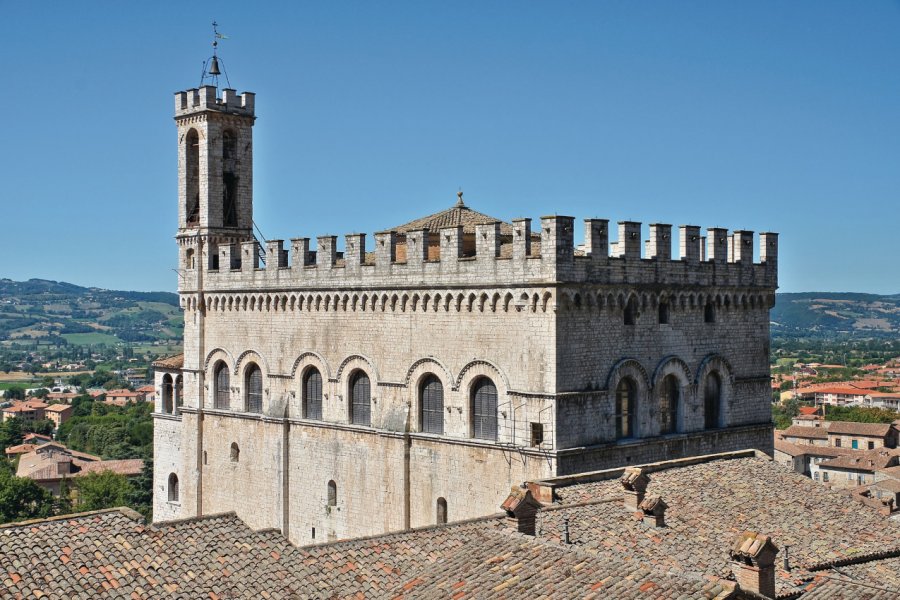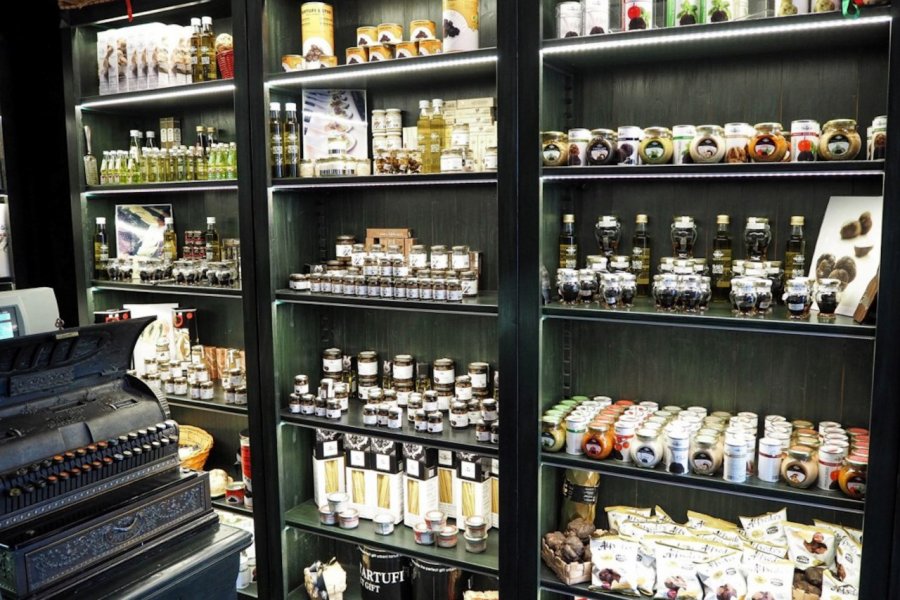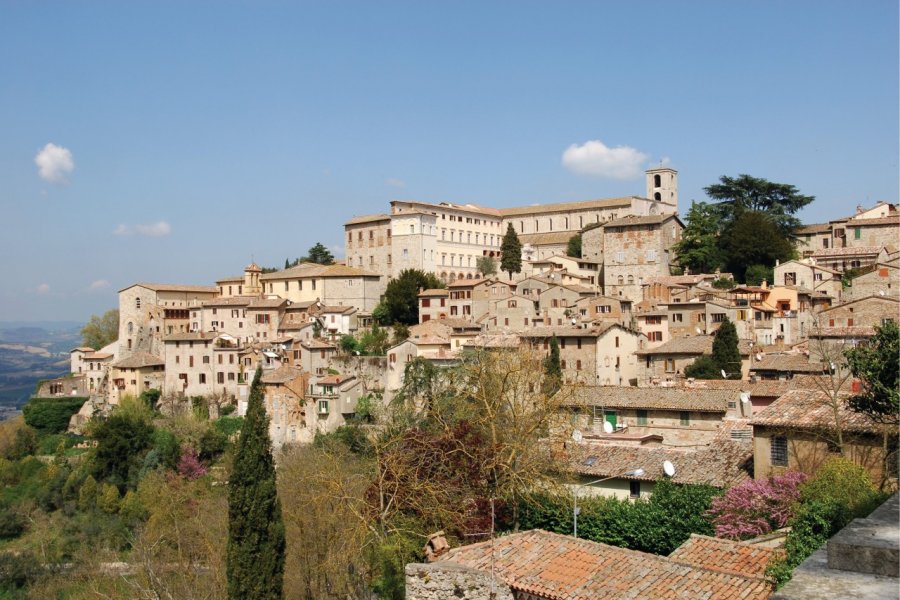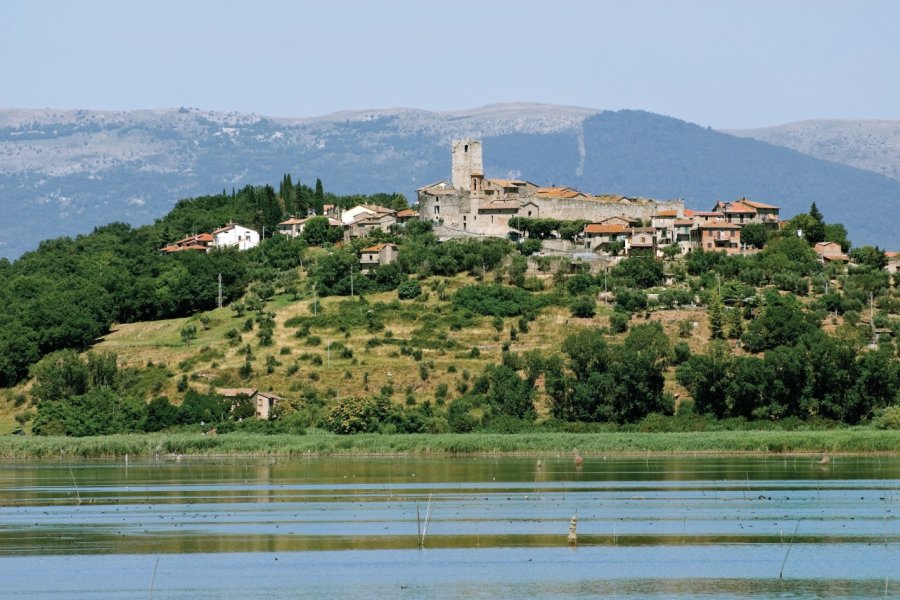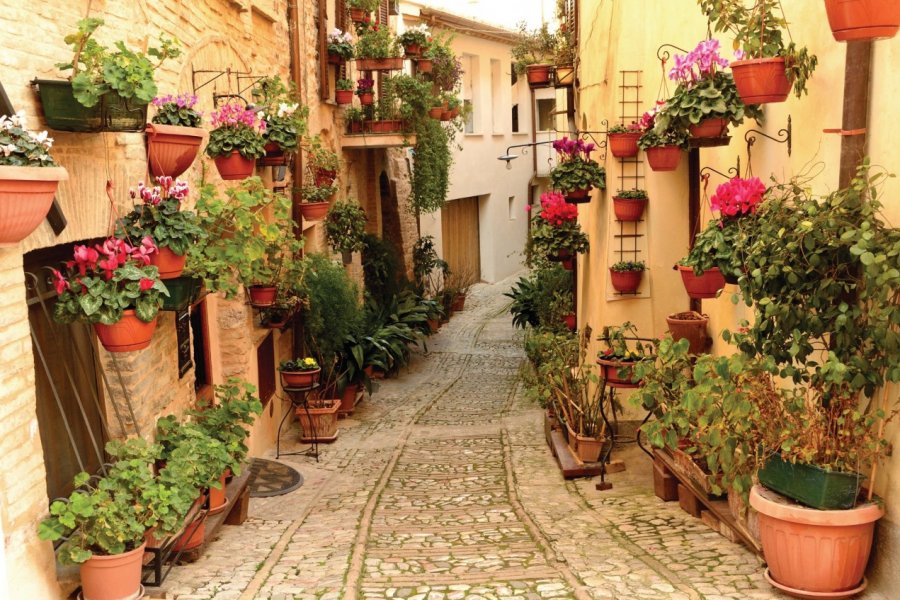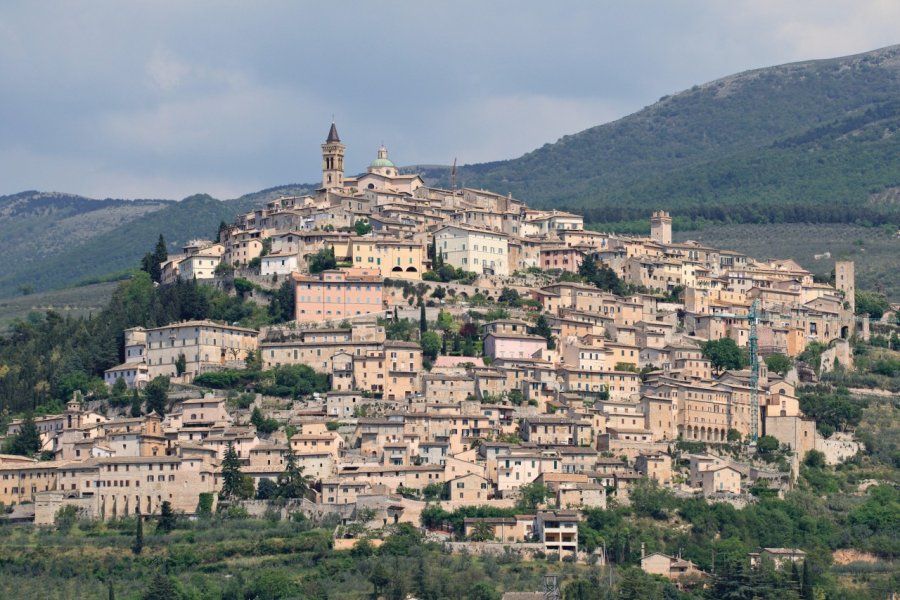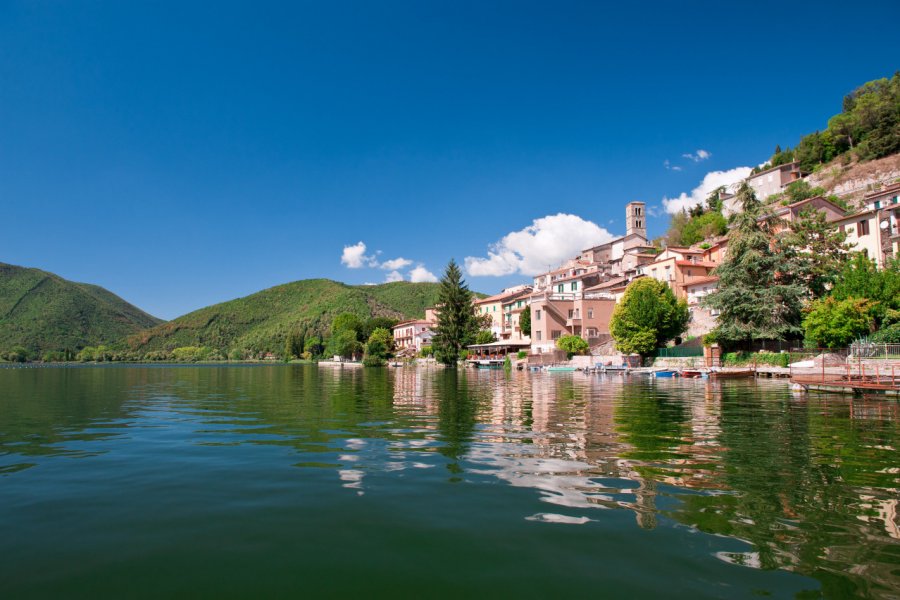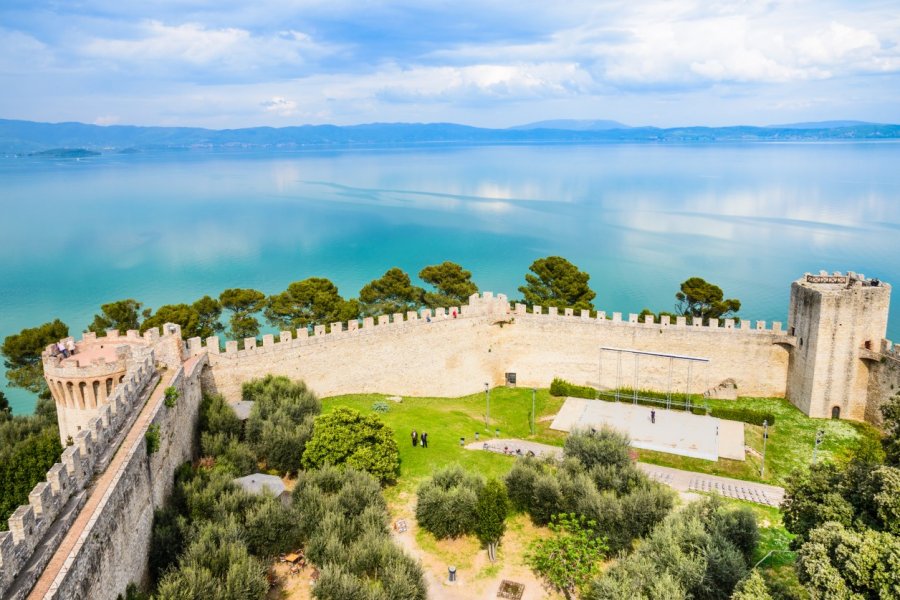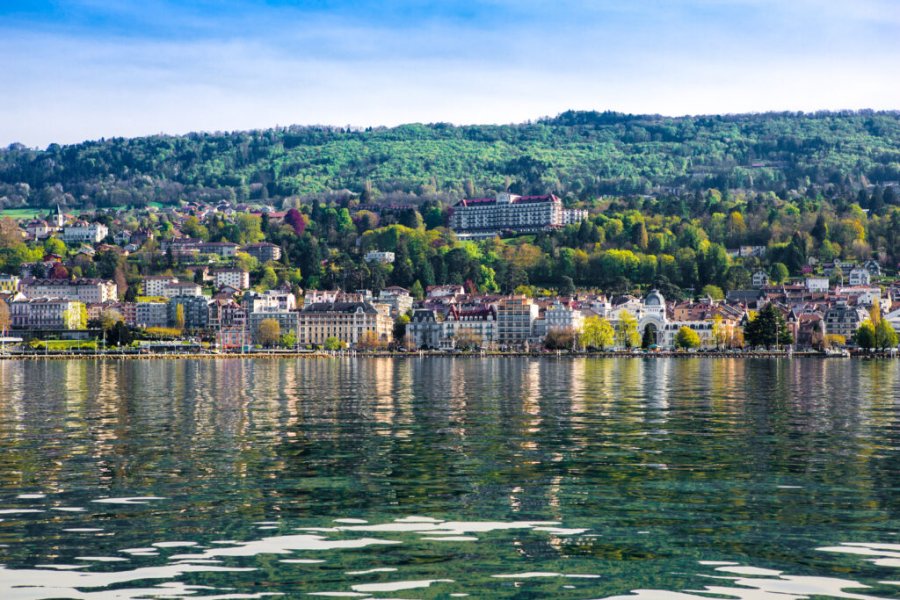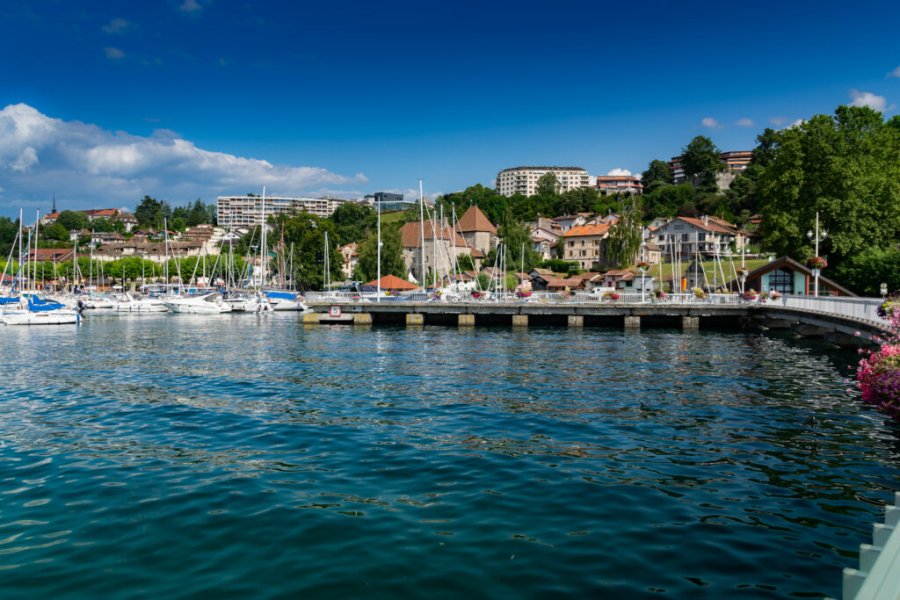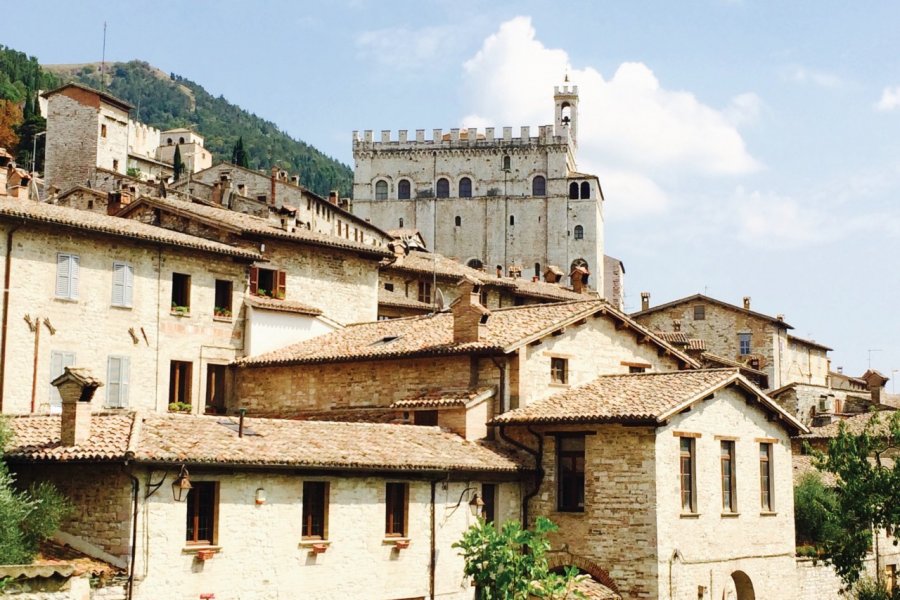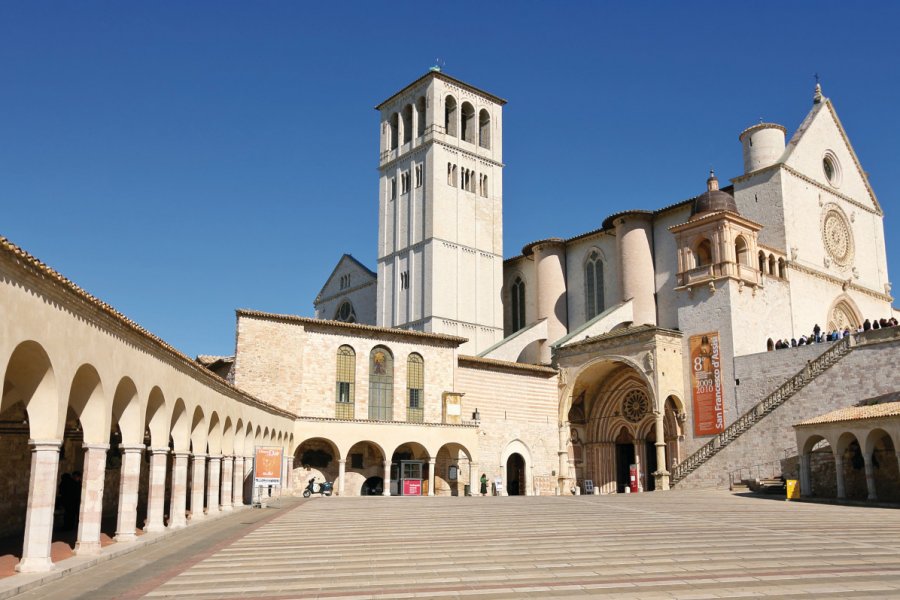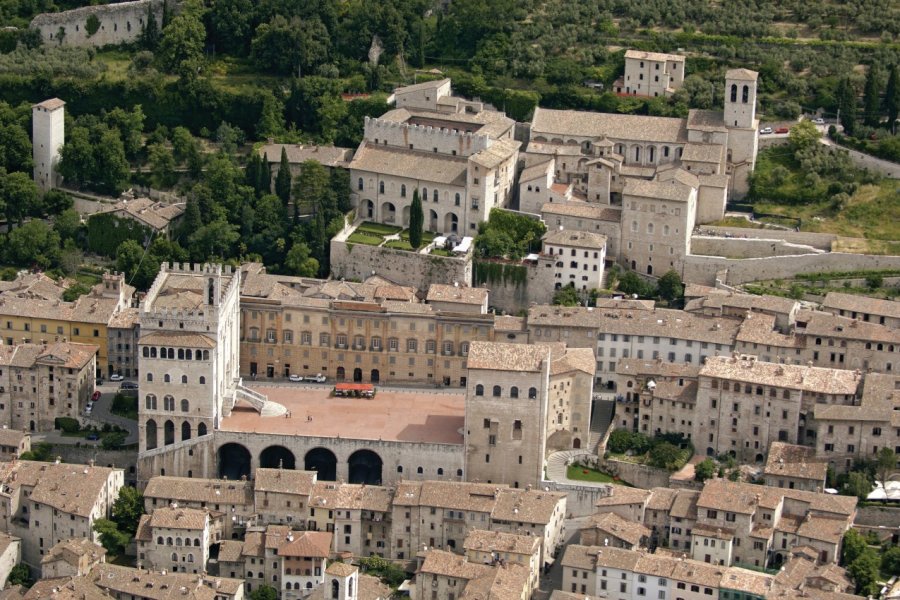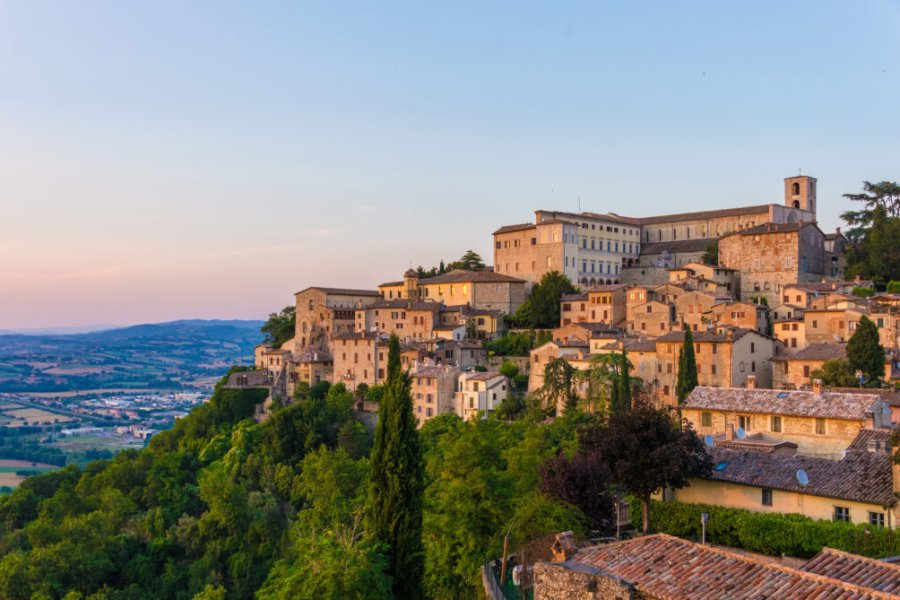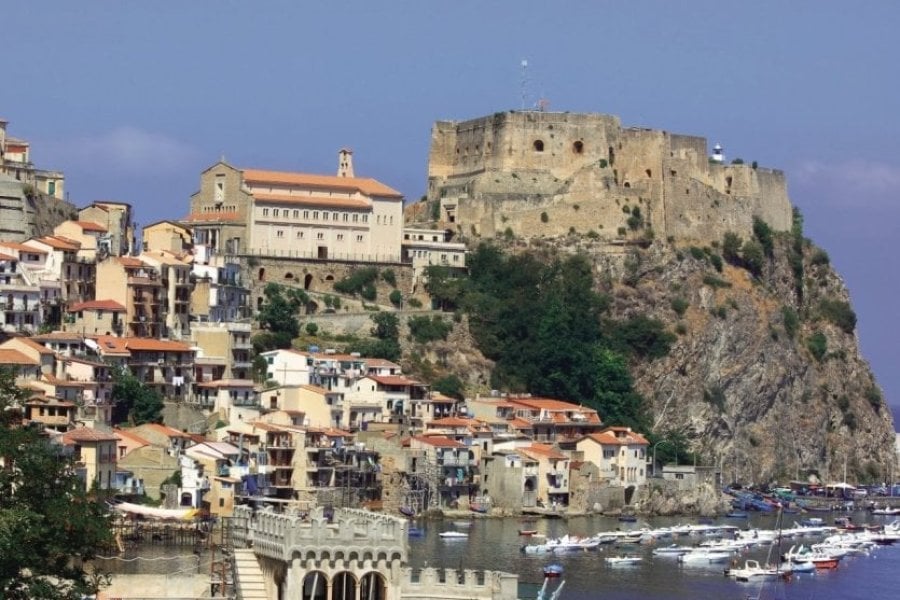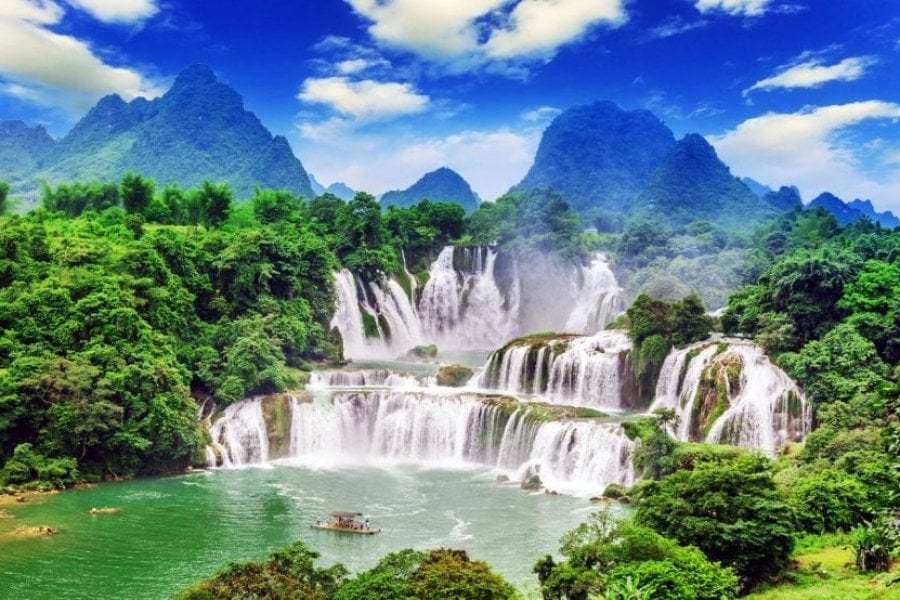Travel Guide Umbria
Steeped in fascinating natural and historical beauty,Umbria offers a landscape of verdant valleys, mountains and perched medieval villages. Often overshadowed by neighboring Tuscany, Umbria has a quiet charm and hidden treasures. If you're looking for authenticity, this Umbria Travel Guide reveals a secret region, nicknamed the green heart of Italy. Green hills dotted with cypress trees, ancient hilltop towns and winding valleys make this region irresistible.
Perugia, its regional capital, is a lively city with a rich Etruscan heritage and the National Gallery of Umbria with its paintings by Perugino. Narrow streets lead to lively squares, impressive cathedrals and museums. A few kilometers away, Assisi, the birthplace of St. Francis, is a world-renowned place of pilgrimage. Admire the cypress avenue and the breathtaking panorama. Discover the tangled alleys of Citta della Pieve and the sleek facades of Gubbio. Bevagna beckons with its peaceful countryside. In Spoleto, the monumental staircase of the Duomo awaits you, while Orvieto Cathedral reveals astonishing works by Signorelli, and Ferrentillo surprises with its Chinese mummies. Finally, the vast pastures around Castellucio and Norcia offer an unforgettable mountain spectacle. Your Umbria Tour Guide invites you into the heart of nature: the Sibillini Mountains National Park offers picturesque hikes and Lake Trasimeno, the peninsula's largest lake, is a paradise for water sports.
Umbria is also famous for its delicious cuisine and exquisite wines. Black truffles, extra-virgin olive oil, Montefalco wines and Perugian chocolate are all delicacies not to be missed during your stay in the region. Every meal becomes a celebration of flavors, accompanied by robust, fine local wines like Sagrantino. Festivals, such as Umbria Jazz in Perugia or the Kite Festival in Città di Castello, are all opportunities to immerse yourself in the unique atmosphere of the region.
Umbria is a destination to be savored slowly, lingering in its hidden hamlets. Stay in charming accommodation, sample local produce and let yourself be lulled by the gentle rhythm of Italian life.
What to visit Umbria?
Suggested addresses Umbria
When to go to Umbria?
Umbria is an attractive destination all year round, thanks to its rolling countryside, medieval towns and rich culture:
January to March is winter in Umbria. Although it's low season, it's a great time to avoid the crowds and take advantage of reduced accommodation rates. However, be prepared for cool, even cold weather, with a chance of rain.
April to June: spring is undoubtedly the best time to visit Umbria. The climate is mild, the countryside is in bloom and towns such as Perugia and Assisi come alive without the summer influx of tourists.
July and August : these months mark the peak of the high season in Umbria. The weather is warm and sunny, but expect crowds at major tourist sites and higher accommodation rates.
September and October: autumn in Umbria is spectacular. The harvest gives the countryside a golden hue, and it's also the season for local festivals, especially those linked to truffles.
November to December : as winter approaches, the crowds disperse. It's a good time for a quieter experience, even if the rains are more frequent.
If you want to discover Umbria in all its splendor, spring and autumn are ideal.
Weather at the moment
Umbria enjoys a temperate climate. The summer months, from June to August, correspond to the high season and are marked by warm temperatures, often around 30°C. This is the time to explore Perugia, Assisi and other picturesque towns! On the other hand, winter, from December to February, is the low season in Umbria, with cooler temperatures hovering around 10°C. They can even drop below zero at night.
The Umbrian climate is typically Mediterranean in the west, with mild winters and hot summers, and becomes more continental as you move eastwards, with more marked temperature variations.
For a great travel experience, visiting Umbria in spring or autumn is ideal: you avoid both summer heat and winter cold.
Visiting Umbria is an affordable experience for globetrotters. This Italian destination offers a range of prices to suit different budgets. You'll easily find budget accommodation as well as more luxurious options. For meals, the region is renowned for its delicious, affordable cuisine.
Umbria's currency is the euro (€). Fluctuations in this currency are not frequent and do not significantly affect the cost of living. Credit cards are accepted, and ATMs are easily accessible. Tipping is not compulsory, but it is customary to leave around €1-2 in restaurants, although some establishments already include service in the bill.
Located in Italy,Umbria is subject to the same entry and residence regulations as the rest of the country. If you are a citizen of the European Union, a valid identity card or passport is all you need for a stay of less than 90 days. Travelers from outside the European Union may need a visa for Umbria, depending on their nationality. Consult the Italian visa guidelines to determine whether you need one and, if so, how to obtain it. It is always advisable to carry a photocopy of your identity documents with you, and to keep the originals in a safe place during your stay in Italy. Finally, take out travel insurance to cover all eventualities.
Umbria presents no particular health risks for travelers. There are no vaccinations specifically required for a stay in this gentle Italian region. Nevertheless, check that your routine vaccinations (such as diphtheria-tetanus-polio) are up to date. Water in Umbria is safe to drink from the taps in towns and cities. That said, if you have a sensitive stomach or are in a rural area, you'd be better off drinking bottled water to avoid any risk of contamination.
Remember that this is a region where health and hygiene standards are high. Nevertheless, remember to take out adequate travel insurance and carry a basic first-aid kit to deal with any minor inconveniences that may arise on any trip.
Practical information
- When to travel?
- Weather forecast
- Budget
- Formalities
- Health
- How to travel by yourself?
- How to get organized?
- Getting around
Media
How to go to Umbria? Our advice & tips
Nicknamed the green heart of Italy, umbria is a destination that deserves to be discovered as part of an organized trip, especially if it's your first visit to the region. Here are a few tips to help you make the most of your trip:
Many agencies offer complete tours, combining cultural visits, local gastronomy and relaxing breaks in the Umbrian countryside.
Depending on your interests, opt for themed tours: hiking, wine and food tours, spiritual pilgrimages to Assisi, or artistic escapades in Perugia.
Some tours are seasonal, especially those focusing on gastronomy, such as truffles in autumn or wine in spring.
Opting for an Umbria package tour is an excellent idea, especially if you're looking for a more in-depth, more relaxed way to discover the region.
Discover our selection of travel agencies for this destinationGoing alone in Umbria means total immersion in this Italian region steeped in history, art and spirituality. Without the constraints of a group, you can tailor your trip on the fly. Perhaps a day in Assisi will inspire an unexpected detour to the surrounding mountains or an impromptu visit to a monastery?
Stay in agriturismiwhich are farmhouses, or opt for a bed & breakfast for an authentic experience! Locals are often good advisors for discovering places off the beaten track. Finally, brush up on a few Italian expressions: Grazie, Buongiorno, Dove è...? They'll open doors and bring smiles. Buon viaggio!
Gettingaround Umbria's rolling countryside, medieval towns and historic sites is easy with :
The rail network;
If you rent a car, the roads are in good condition, but beware of small, winding country roads. Bear in mind that many historic towns have restricted traffic zones (ZTL). So it's best to park outside and walk or use public transport.
Buses connect most towns and villages not accessible by train.
Cycling: Umbria is a popular destination for cycle tourism. If you like pedaling, it's a wonderful way to discover the region!
And on foot ! Many towns, such as Assisi and Orvieto, are best explored on foot.
Lose yourself in their narrow streets, climb up to the perched castles and stop off at the little cafés for a well-deserved break. Enjoy!
